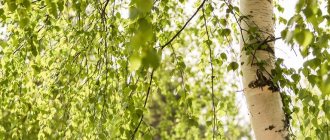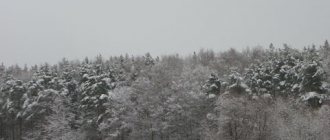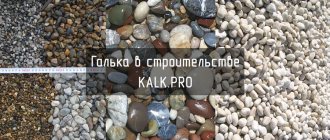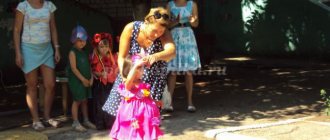About rowan for children
In Russia, it is found in the forest-steppe and forest zones of the European part of the country, right up to the tundra.
Morozov is not afraid, penetrating even the Arctic Circle, and only in the southern regions of the country does the moisture-loving mountain ash take root poorly. Scientists count 84 species of rowan. The mountain ash occupies the most honorable place in this large family. This tree is 8-15 m tall, with an openwork crown. It grows quickly and blooms in the seventh year. It bears fruit annually from 8-10 years of age and lives up to 200 years.
Rowan blooms in May. Bees visit her. Rowan honey is reddish in color, very aromatic and tasty.
The real beauty of the rowan is revealed in late summer - early autumn, when it turns red from the berries. Their clusters will light up with fire against the background of graceful, feather-like leaves. The bright fruits of rowan are called berries, although in their structure they correspond to the fruits of an apple tree. Rowan “apples”, each no more than a centimeter in diameter, are collected in clusters of 25-40, or even 50 pieces. Each “apple” contains 4 and sometimes 8 seeds.
These berries contain not only beauty, but also great benefits, although they have a bitter aftertaste. Knowledgeable people do not eat them at this time. They are waiting for the first frost to hit. The cold removes the bitterness from the berries, and all the beneficial substances are preserved.
There is especially a lot of vitamin C in rowan - just like in lemon and black currant. In terms of the amount of carotene, rowan can compete with carrots. Rowan fruits are also rich in sugars, vitamin A, malic acid and tannins. Thanks to these substances, the berries do not rot and remain fresh for a long time.
Tannins are also found in wood. That is why, when wooden churches began to be built in Rus', rowan was used for their construction along with birch.
Rowan fruits are the main food for many birds in autumn and winter. The bear also loves to eat rowan fruits.
The Russian name is associated with the word “ripple”: when you look at a mountain ash, the bright red berries make a ripple in your eyes.
Abstract of the OOD on cognitive development “Miracle Rowan Berry” for the middle group
Educational:
To develop in children creative abilities, a sense of beauty, the ability to understand and appreciate the beauty and richness of the world around them
Educational:
To cultivate a love of nature, a sense of harmony and beauty of nature, a respectful attitude towards natural objects
Develop independence, confidence, activity
Cultivate aesthetic taste and accuracy in work
Corrective:
Develop visual attention, fine motor skills, color perception, hand-eye coordination
Actively include vision in the viewing process
2. Cognitive development:
Clarify and consolidate children's ideas about mountain ash.
Introduce signs associated with this tree.
Find out what role the mountain ash plays in relation to the life of people and animals.
Activate children's cognitive interest in search activities.
Expand preschoolers’ understanding of the signs of autumn, interest in autumn natural phenomena.
Strengthen ideas about the trees of your native land.
Accumulate emotional and sensory experience.
Develop mental activity, attention, observation.
3. Speech development:
Promote the development of speech as a means of communication, encourage children's speech activity
Activate and expand the vocabulary of preschoolers (colors and their shades, shapes of objects, signs of autumn, etc.)
4. Social and communicative development:
Develop resourcefulness, mutual assistance, endurance, encourage children to self-esteem.
Form patriotic feelings.
To cultivate moral qualities through exposure to art.
5. Physical development:
Form motor skills during physical exercises. minutes
Contribute to the creation of a favorable psychological climate.
Vocabulary work
: berries, brush, bunch of rowan, aroma, fruit, orange-red.
Methodical techniques:
conversation, looking at illustrations, solving a problem-search situation, memorizing poems about rowan, group work (artistic work) wreath “Rowan brushes”, health-saving technologies, modeling, individual work, drawing “rowan branch”.
Materials:
Demonstration - bunches of rowan berries, a basket, a scarf, a tape recorder with a recording of “Dance of Autumn Leaves”. Filippenko, “Rowan berries” by E. Kuryachy.
Handout - sheets of drawing paper in A-4 format with an image of a rowan branch; colored pencils or gouache, plasticine, modeling boards, dried rowan fruits, paper napkins, glue stick, oilcloths.
Preliminary work:
While walking, looking at rowan leaves and berries, writing descriptive stories about them
Learning the poem “Rowan” by I. Tokmakova, listening to songs.
Report No. 2
Rowan is a low tree or tree-like shrub. Belongs to the deciduous genus and the Rosaceae family.
These trees are common in temperate climate zones: in Russia, Europe, Asia, and the north of the Caucasus. They grow in single specimens in forest and forest-steppe areas, on forest edges and clearings, as well as in parks, squares, and courtyards. The tree is unpretentious and grows on almost any soil.
Rowan has a very beautiful appearance. This tree has a smooth, smooth, shiny trunk and a dense, openwork foliage crown. It usually grows to a height of about 10 meters. The trunk of this tree is durable and elastic and is used for making dishes, carts, tool handles and in carpentry. And from rowan branches they weave furniture and various accessories.
Rowan blooms in late spring early summer. When blooming, the flowers are white, pink or cream in color and are folded into umbrellas. The fruits ripen in early autumn. The berries are spherical in shape and colored bright red or bright orange. The size of these fruits is 10 mm, and they taste bitter. Rowan leaves have an oblong, pointed shape and are no more than 20 cm in size. In autumn, the leaves turn yellow and red. The lifespan of rowan is about 100 years.
Rowan is a winter-hardy tree, so it can withstand frosts in winter without any problems. Rowan fruits are distinguished by strong bitterness, which disappears after the first light frost and the berries acquire a sweetish taste. Rowan does not shed its berries in winter, thereby attracting the attention of titmice and bullfinches.
There are about 80 types of rowan. And only a few types of rowan grow in Russia: common, Siberian, smooth, Kashmir. The most common is the ordinary type. The berries of this species are red in color and have a tart, bitter taste. Siberian mountain ash is also called Anadyr or polar. This species survives frost, but grows no more than 3 meters in height. Smooth rowan or Amur rowan differs from other types in the orange color of the berries. And the Kashmiri mountain ash has completely white berries. This rowan is grown mainly for decorative purposes.
Currently, the most popular varieties are: Titan, Scarlet large, Rubinovaya, Daughter Kubovaya, Businka, Burka, Granatnaya, Dessertnaya, Vefed, Michurinskaya dessert, Angri. The Titan, Granatnaya and Burka varieties are excellent for preparing decoctions that are used for illnesses. And the varieties Vefed, Businka and Daughter Kubova have a sweetish taste. But the sweetest variety is Michurinskaya dessert. The Angri variety is characterized by large berries the size of cherries.
Rowan is a very healthy fruit tree, as it contains a large amount of vitamins A, B, C, as well as potassium, phosphorus, zinc, calcium and iron. Rowan fruits are eaten fresh, dried and pickled. The berries are used to make medicines, marshmallows, marmalade, syrups, compotes, add to tea, and also make jam, jams and preserves from them.
Popular message topics
- Lev Nikolaevich Tolstoy
A great Russian writer who gained worldwide fame thanks to the following works: War and Peace, Anna Karenina, Sevastopol Stories, Childhood, Youth, Adolescence and many others. Born in the Tula province in 1828 into a family - Sulfur
In the periodic table of Mendeleev, sulfur is in the VIA group (sixth group, subgroup A), in the third period. It belongs to a small group of non-metals: The periodic table has only 22 of them, including inert gases. - Ancient Egypt
Ancient Egypt began to emerge approximately 2000 thousand years ago, on the banks of the Nile. This empire left humanity a huge cultural heritage and architectural masterpieces. Not all museums in the world can boast of having Egyptian artifacts.
Description of the plant
Sorbus are summer-green shrubs and low-growing trees with an average height of 15 m. Individual specimens, on which the shadow of competing species does not fall, grow up to 2530 m. The age of representatives of the genus Sorbus usually reaches 80 years, but sometimes (mainly in the mountains) they live up to 120 years. In the first 20 years, trees and shrubs grow relatively quickly, then growth stops.
Photo: how rowan berries grow
Rowan trees are slender, with an oval or round, loose crown of irregular shape. The barrel is cylindrical. The branches are spaced from it or directed diagonally.
Rowan bark
The smooth, shiny bark of young plants is yellowish to greenish-gray in color, covered with elongated lentils that facilitate gas exchange. With age, it acquires a matte gray or brown color and a cracking structure. In some specimens in old age, the lower part of the trunk becomes blackish. Young shoots are usually shaggy and ash-gray in color.
Rowan leaves
The leaves, alternately located on the branches, are simple or odd-pinnate, divided into a petiole and oblong-elliptic plates with short petioles, a pointed apex and a rounded base. The edge is mostly serrated, less often continuous. The upper side of the plates is smooth, green, and the lower side is gray-green, in some species with a light white-felt cover. Stipules usually fall off early.
Photo: rowan leaves in autumn
Rowan flowers
Depending on the species, the plant blooms in spring or summer. The inflorescences are corymbose panicles, in which many small flowers are collected, emitting an intense, specific aroma. The axes of the inflorescences are completely covered with hairs (ssp. Aucuparia) or almost bare (ssp. Glabrata).
Bisexual flowers about 10 mm in diameter, radially symmetrical, with a double perianth. The five sepals are smooth or hairy, ovate or pointed, short triangular in shape, 1.5 to 1.8 mm long. When the fruits ripen, they retain their fleshy consistency.
Photo of blooming rowan
Five unfused white, creamy-white or pinkish petals, 35 mm long, round-elliptical or broadly ovate, smooth or pubescent. The length of the 2025 (rarely 44) stamens, arranged in 23 circles, is almost the same as the petals. The anthers are ovoid or almost round. Below there are 25 carpels, free or fused together and attached to the hypanthium. Pistils with three columns, glabrous or pubescent.
Rowan fruits
The fruits are small apples from ovoid or round to ellipsoidal or oblong, smooth or covered with hairs. They come in white, yellow, pink, brown, orange and yellow.
They ripen in August, September or October and often remain on the branches until winter. At the top, rowan, like apples, retains 5 sepals. Each of the 27 chambers of the seed nest contains 12 seeds.
Before frost, fresh fruits are sour, tart and bitter. After the first frost, the bitterness disappears, they become sweet and sour and are eaten by birds, squirrels and other animals. The variety of Sorbus aucuparia, known as Nevezhinskaya, has fruits that are sweet and frosty. The Crimean variety Sorbus domestica is interesting, with large (up to 3 cm), pleasant-tasting fruits.
Photo: mountain ash in winter







